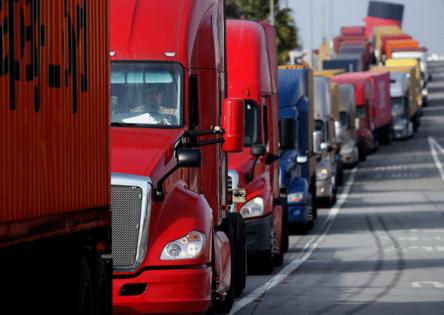EPA issues new clean air rules for heavy-duty trucks. California's rules are tougher
Published in Business News
The U.S. Environmental Protection Agency issued tough new emissions standards Friday for heavy-duty trucks and buses, with the aim of cutting air pollution, addressing climate change and boosting economic growth.
California’s government enacted similar rules last year. The state rules are tougher than the Biden administration’s and are expected to remain so.
The new federal rules will curtail a billion tons of greenhouse gas emissions each year and provide financial benefits worth $13 billion annually “related to public health, climate, and savings for truck owners and operators.” Big rigs, delivery trucks, cement mixers, garbage trucks, transit buses and school buses are all included.
Unlike California’s rules, which mandate sales of new electric battery and fuel cell trucks in increasing percentages through 2042, the federal rules allow more flexibility in fuels, as long as air emissions standards are met. Gasoline, diesel, biodiesel, hydrogen and electric-drive trucks would technically all be allowed, but even the EPA acknowledged the rules in effect will require a huge increase in the numbers of electric trucks.
Those rules are similar to rules on passenger cars and trucks finalized last week that don’t mandate specific technologies but also will result in a rapid increase in the numbers of electric vehicles manufacturers will be allowed to sell. California’s rules are tougher for new cars and pickups, too, with mandates that increase the percentage sold until they reach 100% by 2035.
A dozen other states plan to follow California’s lead on transportation emissions.
Transportation is a major contributor to greenhouse gas emissions: 29% of all emissions in the U.S., and nearly 50% in California, whose electric power sector is cleaner than the nation as a whole.
It also is a major source of pollution that directly degrades public health, especially near ports and along heavily populated major transportation corridors.
“Exposure to traffic-related pollution is a serious health hazard to those living in communities with heavy truck traffic,” Harold Wimmer, leader of the American Lung Association, said in a statement Friday. “The mixture of emissions has been linked to poor birth outcomes, reduced lung and cognitive development, development and worsening of chronic respiratory and cardiovascular diseases, and increased risk of dementia, cancer and premature death.”
Wimmer added that the American Lung Association estimates that transitioning to zero-emission trucks and electricity could save nearly 67,000 lives by 2050.
...continued
©2024 Los Angeles Times. Visit at latimes.com. Distributed by Tribune Content Agency, LLC.







Comments